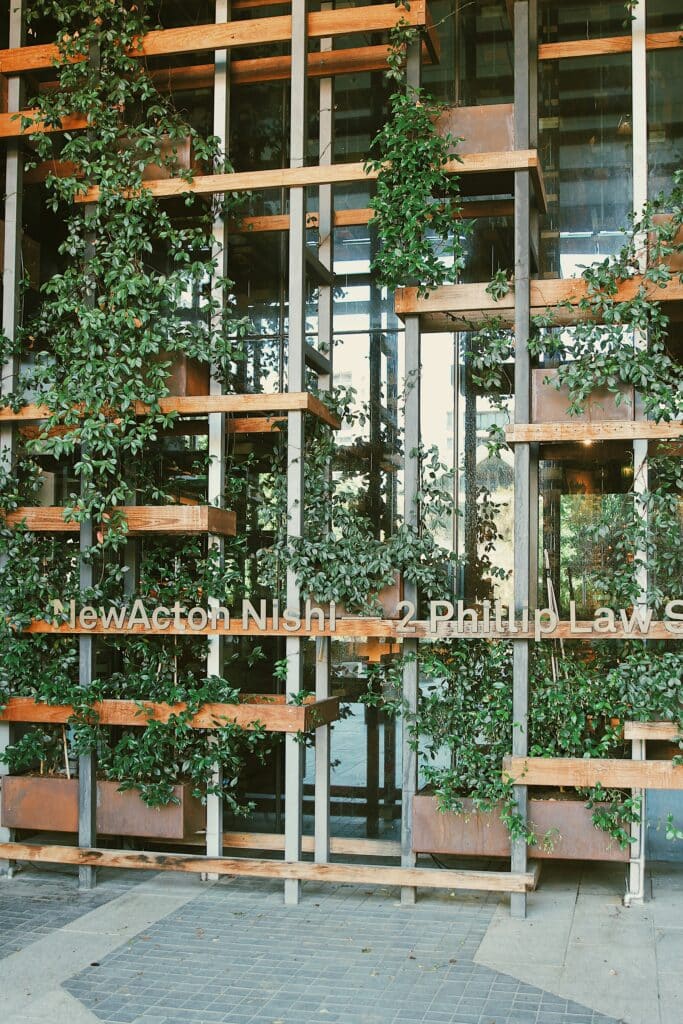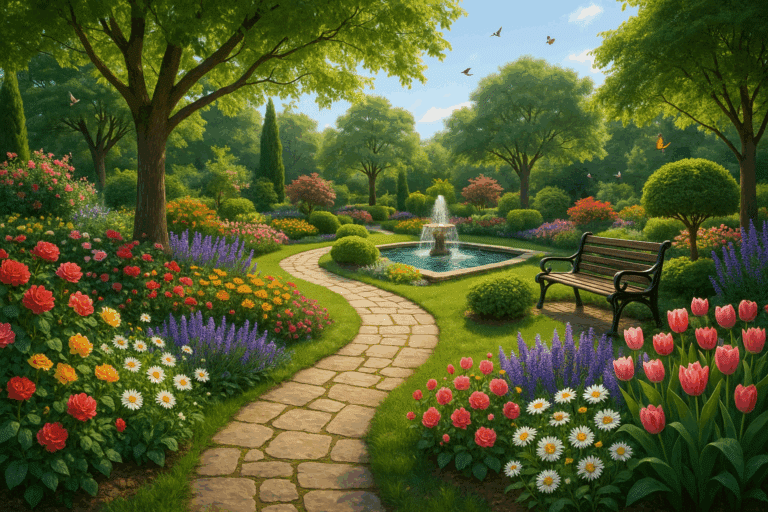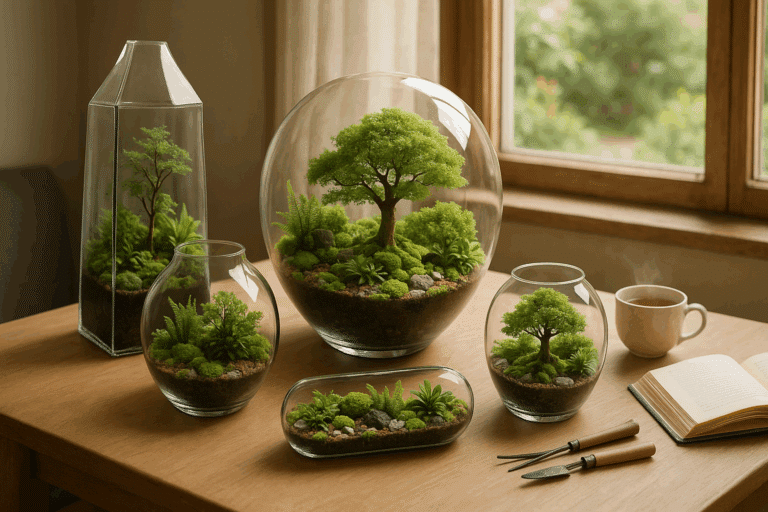It’s not a dream, but a very achievable reality with the transformative magic of a vertical wall planter.
In this post, we’ll guide you on the wonderful journey of creating a thriving green space that adds a touch of elegance and freshness to any room. From the basics of choosing the right plants and wall planters to step-by-step instructions on installation, we’ve got it all covered for you.

Additionally, we will also delve into the numerous benefits of having a vertical wall planter, beyond the obvious aesthetic appeal. It can improve air quality, increase humidity and create a calming environment, all of which contribute towards enhancing your overall wellbeing.
So, buckle up and prepare to immerse yourself in the world of vertical gardening. Let’s transform your walls into mesmerizing canvases of greenery together! 🌿🍃🌾
Understanding Vertical Wall Planters
Vertical wall planters are ingenious devices that allow us to transform any wall into a lush, green environment. This form of vertical gardening allows for efficient use of space, while also serving as a stylistic element to enhance interior or exterior design.
In its simplest form, a vertical wall planter consists of a container that is attached to a wall, with space for plants to grow vertically. This container may be made from a variety of materials, including metal, plastic, wood, fabric, and terracotta. However, the key factor is its design, which must enable the plants to grow upwards and outwards. Many modern systems also include built-in irrigation mechanisms, drainage solutions, and modular configurations to suit different aesthetics and functional needs.
In its simplest form, a vertical wall planter consists of a container that is attached to a wall, with space for plants to grow vertically. This container may be made from a variety of materials, including metal, plastic, and terracotta. However, the key factor is its design, which must enable the plants to grow upwards and outwards.
Why Choose a Vertical Wall Planter?
A vertical wall planter not only maximizes your space but also contributes to creating a healthier living environment. Plants have been proven to improve air quality by removing toxins and releasing oxygen. Moreover, the presence of greenery can have a positive impact on mental health, reducing stress and enhancing overall well-being.
Additionally, vertical wall planters serve as a natural insulator. When installed on external walls, they can help regulate indoor temperature by shielding surfaces from direct sunlight and reducing heat absorption. Indoors, they soften the environment with a calming touch of nature, turning otherwise plain walls into living art. Whether in homes, offices, or urban balconies, vertical wall planters are a beautiful, practical way to bring nature closer to your daily life.
The Different Types of Vertical Wall Planters
Vertical wall planters come in a variety of shapes and sizes, depending on your specific needs and preferences. Some of the most popular types include:
- Living Wall Planters: These are large panels that can accommodate multiple plants, creating a living wall of greenery. They are ideal for large, empty walls and can be used both indoors and outdoors.
- Pocket Wall Planters: These have individual pockets for each plant, allowing you to grow a variety of different species. They are perfect for small spaces and for creating a diverse, colorful display.
- Trellis Planters: These consist of a trellis or grid onto which plants can be attached and trained to grow. They are great for climbing plants and for creating a unique, architectural feature.
Vertical wall planters come in a variety of shapes and sizes, depending on your specific needs and preferences. Some of the most popular types include:
Living Wall Planters: These are large panels that can accommodate multiple plants, creating a lush, vibrant tapestry of greenery. Often used in commercial spaces, office lobbies, or modern homes, they serve as both a decorative feature and a natural air purifier. Living walls may include built-in irrigation systems to make maintenance easier, especially in large-scale installations.
Pocket Wall Planters: These feature individual fabric or felt pockets sewn into a vertical backing, each acting as a small planter. This design allows for the easy rotation of plants and makes it simple to experiment with different species. Because of their modular design, pocket planters are especially suited to herbs, flowers, and small leafy greens. They’re an excellent choice for balconies, kitchens, and compact outdoor areas.
Trellis Planters: These consist of a trellis or metal grid system onto which pots can be hung or vines can climb. This design is perfect for climbing or trailing plants like sweet peas, morning glories, or pothos. Trellis planters also add a sculptural element to a wall and work well in gardens where vertical interest is needed.
Choosing the Right Plants
When selecting plants for your vertical wall planter, consider factors such as light conditions, humidity, temperature, and plant compatibility. Some plants are naturally suited to vertical growth and thrive when their roots have limited space but adequate access to nutrients and water.
Great choices include:
Trailing plants, like English ivy or golden pothos, which create cascading effects for visual drama.
Ferns, for their love of humidity and lush texture.
Succulents, which require minimal water and look beautiful when grouped in patterns.
Herbs, such as basil, thyme, and mint, for practical kitchen gardens.
Installing Your Vertical Wall Planter
Installation of your vertical wall planter will depend on the type of planter and the wall material. For lighter planters, simply using sturdy wall hooks may be sufficient. Heavier planters may require more complex installation, such as using wall brackets or a French cleat system.
Installation will vary based on the type of planter and the structure of your wall. For drywall or plaster, always locate studs or use appropriate anchors for weight-bearing. Heavier planters, like living wall panels, may require French cleat systems, steel brackets, or mounting rails for safe support. Outdoor installations should use weather-resistant hardware and be sealed against moisture. Always assess your wall’s capacity before choosing a planter type to ensure longevity and safety.
Watering and Maintenance
Maintaining a vertical wall planter requires a consistent care routine tailored to the specific plants you’re growing. Watering is arguably the most important aspect of care, as vertical gardens tend to dry out faster than traditional horizontal gardens due to gravity and increased exposure to air.
Some vertical wall planters are equipped with built-in drip irrigation systems or self-watering reservoirs, which greatly reduce the effort involved and help ensure an even distribution of moisture. These systems are particularly useful for larger installations or for those who may not have time for daily watering.
If your planter doesn’t come with an automated system, manual watering should be done with a gentle touch. Use a watering can with a long spout or a hose attachment designed for precision to avoid over-saturating the upper layers while neglecting the lower ones. Always ensure the excess water has proper drainage, as stagnant water can lead to root rot or mildew.
Beyond watering, feeding your plants with the right nutrients is vital. Use a balanced liquid fertilizer every 2–4 weeks during the growing season. For organic options, compost tea or fish emulsion can be effective and gentle for a diverse wall garden.
Pruning and grooming are also necessary. Vertical planters often host a mix of fast and slow growers, and regular trimming will help maintain a clean and balanced look. Removing yellowing leaves, deadheading flowers, and pinching off leggy growth will not only improve appearance but also stimulate new, healthy growth.
Creating a Stylish Design with a Vertical Wall Planter
A vertical wall planter doesn’t have to be purely functional—it can serve as a focal point of your indoor or outdoor décor. With thoughtful design choices, you can turn a simple structure into a vibrant tapestry of greenery.
Start by selecting plants with contrasting foliage textures and colors. For example, pair the bold, structural leaves of snake plants with the soft trailing tendrils of pothos or ivy. Use flowering plants like petunias, begonias, or pansies to add seasonal color bursts. Succulents can be arranged like living mosaics due to their range of hues and compact size.
For a modern aesthetic, stick to a monochromatic color palette with sleek containers and simple greenery, such as silver-leaved plants or deep emerald ferns. If you prefer a boho or eclectic vibe, mix trailing vines, herbs, and flowering varieties in bright ceramic pots or rustic wooden frames.
You can also create living wall patterns or geometric arrangements by planting in alternating colors or aligning certain species diagonally. Modular vertical planters make it easy to rearrange or swap out plants for seasonal updates or fresh looks throughout the year.
Don’t forget the container style—the materials and shapes of your planters can greatly influence the overall feel. Metal grid systems provide an industrial look, while wooden pallets or recycled crates lend a more natural, rustic charm.
Using Lighting to Enhance Your Vertical Wall Planter
Lighting can play a crucial role in highlighting your vertical wall planter and creating the desired ambience. For indoor planters, consider using spotlights or uplighting to accentuate the plants and cast beautiful shadows on the wall. For outdoor planters, solar-powered lights or fairy lights can add a magical touch after dark.
In conclusion, a vertical wall planter is a versatile and stylish way to bring the beauty of nature into your home or garden. With the right choice of planter and plants, and a little creativity, you can transform any wall into a stunning, living work of art.
Lighting transforms your vertical wall planter from a daytime showpiece into an enchanting feature after dark. Indoors, use directional LED spotlights or strip lighting to highlight specific plants or to create a soft glow behind the foliage. Adjustable lamps let you change the mood depending on the time of day or occasion.
For optimal plant health, consider integrating grow lights—particularly if your wall doesn’t receive much natural light. Modern grow lights come in stylish, discreet designs and can blend seamlessly with your décor while ensuring your plants thrive.
Outdoors, solar-powered LED lights are an eco-friendly option. Place small lights at the base of the wall to create upward illumination or string fairy lights around the frame for a cozy, whimsical feel.
For a dramatic effect, try backlighting sections of the wall with waterproof LED panels or placing uplights beneath cascading plants like sweet potato vine or creeping Jenny to emphasize movement and form.
In conclusion, a vertical wall planter is much more than a trend—it’s a smart, stylish solution for incorporating greenery into spaces where horizontal room is limited. With thoughtful plant selection, consistent maintenance, artistic arrangement, and strategic lighting, your wall can become a living mural, full of life and color.
Whether indoors or outdoors, in a compact apartment or a spacious backyard, vertical wall planters allow you to express your creativity, improve your well-being, and reconnect with nature—one square foot at a time. 🌿
Conclusion
In conclusion, a vertical wall planter can radically transform any wall into a lush green masterpiece, injecting stylish design and vibrant life into your living or working space. This brilliant innovation not only maximizes your space but also enhances your overall décor and ambiance. The beauty of vertical wall planters is that they are a versatile option for both indoor and outdoor settings, allowing you to bring the serenity of nature into your urban living environment.
Furthermore, the vertical wall planter is an ideal solution for those with limited space, as it leverages vertical space that would otherwise go unused. This offers a unique opportunity to cultivate a variety of plants, including herbs, succulents, and flowers, thereby enhancing the aesthetic appeal of your space.
In addition, investing in a vertical wall planter is a sustainable and eco-friendly choice. It contributes to air purification, reduces carbon dioxide levels, and promotes a healthier and happier living environment.
Ultimately, a vertical wall planter is not just a stylish décor piece, but a lifestyle choice that brings an array of benefits to your space and wellbeing. Transform your wall today and enjoy the lush, stylish design that only a vertical wall planter can offer. 🌱🌿💚



